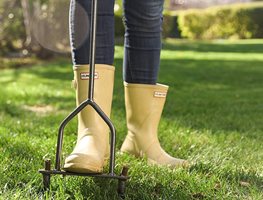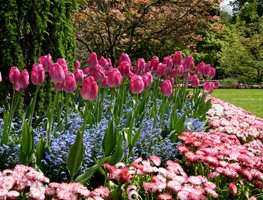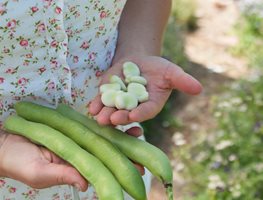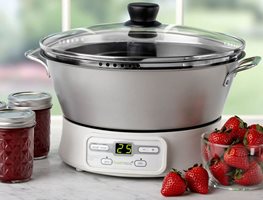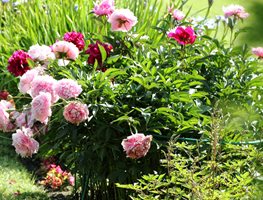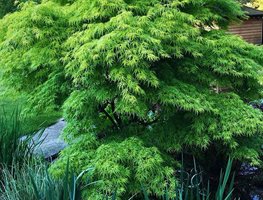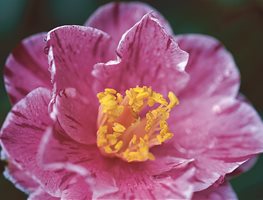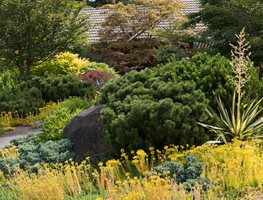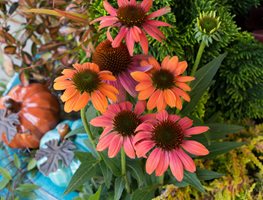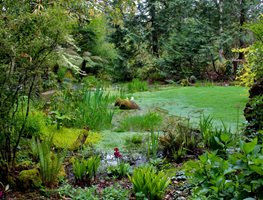10 Gardening Activities for September in the Pacific Northwest
Here are a few garden reminders, inspiring ideas, maintenance tips, and places to visit this month.
1. Aerate & Fertilize Lawns
Now that cooler weather has likely set in you can aerate and fertilize your lawn. Aerate by early fall because the wet weather will help your lawn produce healthy root growth. To aerate, use a manual lawn coring aerator or rent a motorized aerator from a local hardware store. Make sure your lawn has been watered recently so the soil is soft. It’s best to apply fertilizer when temperatures are cooler, so you can wait to do that later this month. Try an organic all-season lawn fertilizer such as Espoma Organic Lawn Food.
2. Plant Bulbs
September through mid-November is the best time to plant bulbs, but timing really depends on your climate. You want to get the bulbs in the ground a few weeks before the ground freezes so they have a chance to establish roots. When planting, it’s also a good idea to use some bulb fertilizer if your soil needs it. If your soil is lean, consider top dressing the bulbs with compost and/or a balanced 10-10-10 slow-release fertilizer. Don’t put the fertilizer directly into the hole—that will burn the bulbs. Fertilize when you plant, and then again in spring when foliage emerges. Water the fertilized soil well.
3. Plant Cool-Season Edibles
It’s time to get cool-season crops in the ground. Your cool-season garden can include broccoli, carrots, cabbage, cauliflower, garlic, peas, spinach, and more. If you’re planting crops in the same beds that you grew summer vegetables and fruits, be sure to add compost. Plant lettuce and mesclun each week for a successional harvest. If you plant on growing into the winter, consider using row covers or hoop houses for crops. Winter temperatures will destroy most of these crops if they are not protected. If you’re not planning on growing a cool-season garden, fill your beds with cover crops that will help replenish the soil with nitrogen and other nutrients. Some good choices include fall green manure mix, fava beans, or crimson clover (which is also quite beautiful).
4. Harvest Fruits & Vegetables Before Frost
If frost is in the forecast, harvest tomatoes before it comes (even if they are green) and let them ripen indoors. Otherwise, the frost will destroy your fruits. You can also harvest potatoes, gourds, and other vegetables that are still producing. This is also a great time to harvest the last of your herbs. Use the fresh herbs and dry extras for use throughout fall and winter. If you have produce that you won’t be able to use while it’s fresh, consider canning or freezing it. There are pros and cons of each method of saving food, but freezing is often the easiest and least time consuming. Here’s a chart that compares the two methods. To save tomatoes, it’s often best to turn them into a sauce or paste before canning or freezing. You can also try an automatic jam and jelly maker. For more suggestions, see How to Preserve Your Harvest
5. Divide or Plant Peonies
Peonies and irises are terrific flowers for the spring garden, and the work you need to do to help them produce beautiful flowers needs to be done in autumn. September is a great time to divide peonies or add new varieties to your collection. Learn more about the different types of peonies, as well as how to grow peonies.
Don't miss what to do in the garden each month, make sure you're getting our weekly newsletter.
6. Buy & Plant Trees or Shrubs
Fall is the best time to plant trees and shrubs because wet weather and cooler temperatures help plants establish healthy root systems. If you are looking for a new tree, there are several good online resources for Pacific Northwest trees including this list of powerline-friendly trees (that mature to less than 25 feet tall), this list of small trees with big impact, or the National Wildlife Federation's Native Plant Finder.
7. Also Plant Now
Stagger plantings of early, mid- and late varieties of camellias and you can have flowers from November through April (or even May!) If the temperatures are still high, plant where they are protected from bright light or leaves may be scalded by the sun.
Providing year-round interest, crape myrtles are very resilient, love the sun, and are extremely heat tolerant. When planting, dig a hole twice as wide and just as deep as the container. Stake if needed and water thoroughly after planting.
Plant shrub roses in a sunny to lightly shaded site with fertile, well-draining soil that stays evenly moist for best results. You can also plant in a container, make sure the pot is at least 15 to 20 inches in diameter and 18 to 24 inches deep, with adequate drainage.
8. Online Learning
Go back to “garden school” this fall with online gardening courses taught by talented experts in their respective fields. Learn how to master container gardening, deer-resistant design, low maintenance plants and more from Karen Chapman from the Seattle area. There are also courses on edible gardening, houseplants, and more from other instructors.
9. Refresh Containers with Fall Color
By late summer and early fall, container gardens can start looking tired. Give them a refresh or replant them completely. Chrysanthemums, ornamental grasses, marigolds, ornamental cabbage, heuchera, sedum, coleus, sweet potato vine, pansies, and violas all make nice choices for beautiful fall color. Learn more about how to create beautiful containers in these online learning courses from Karen Chapman, Fabulous Fall Containers or her Ultimate Container Gardening Bundle.
10. Visit Heronswood
Heronswood, a botanical garden originally built by famed plantsman Dan Hinkley, has been completely restored under the direction of Hinkley and a small group of staff and volunteers. The garden has a vast collection of incredible plants that have year-round interest. Many of the plants are grown from seed or seed lines that Hinkley collected in the wild in locations such as Europe, Asia, Central and South America, South Africa, New Zealand, and Australia. The garden is open Fridays, Saturdays, and Sundays from March through the end of October (dates vary slightly from year to year). Entry is $10 for adults and $5 for ages 7 to 17 (ages 6 and under are free).
If you enjoyed this information, sign up for our weekly newsletter. Each week, you'll get Garden Design's best delivered right to your inbox including design tips, plant picks, great gardens, outdoor living products, and events to enjoy — along with monthly gardening checklists just for your area.
Do you know someone who would enjoy this Pacific Northwest Region gardening information? Why not share it with them?
When you purchase products through links on our site, we may receive an affiliate commission. Thank you for your support.
